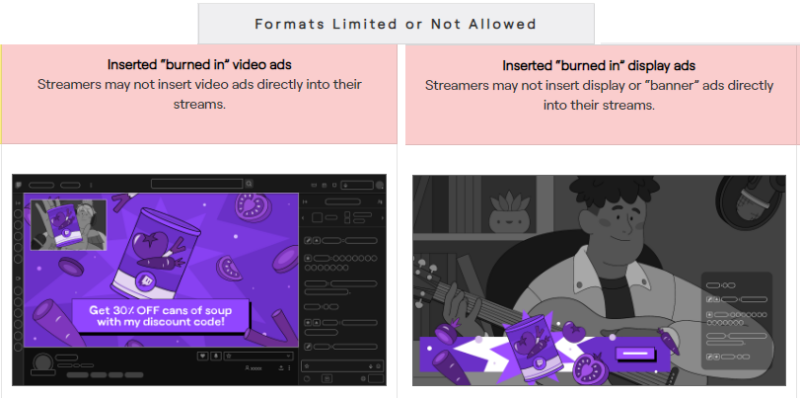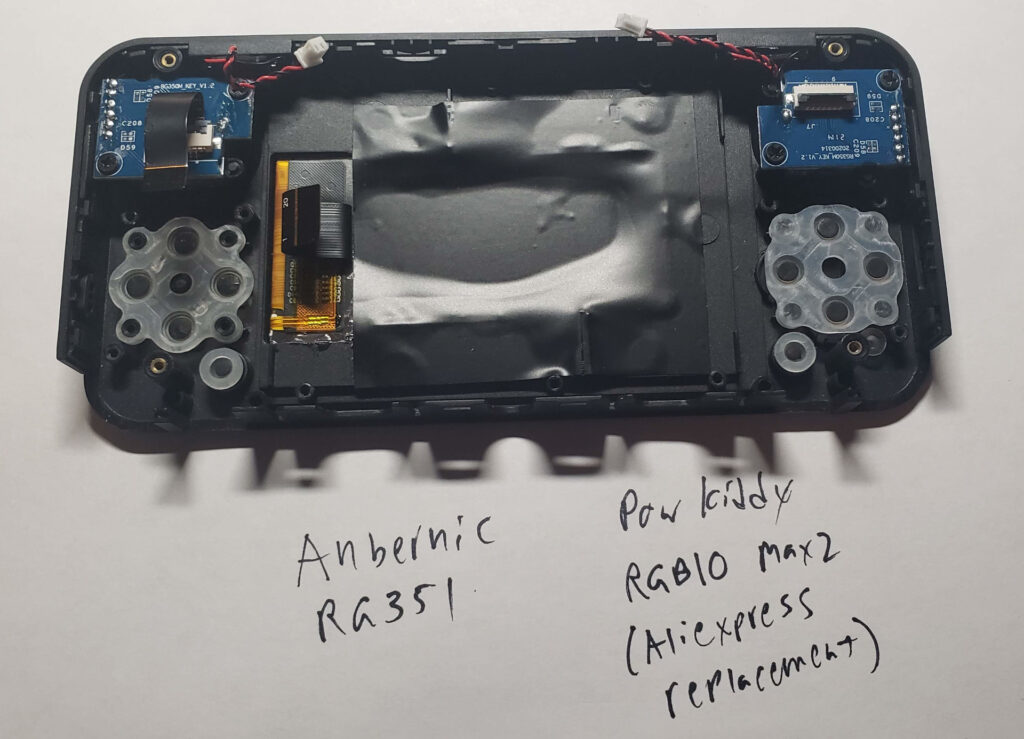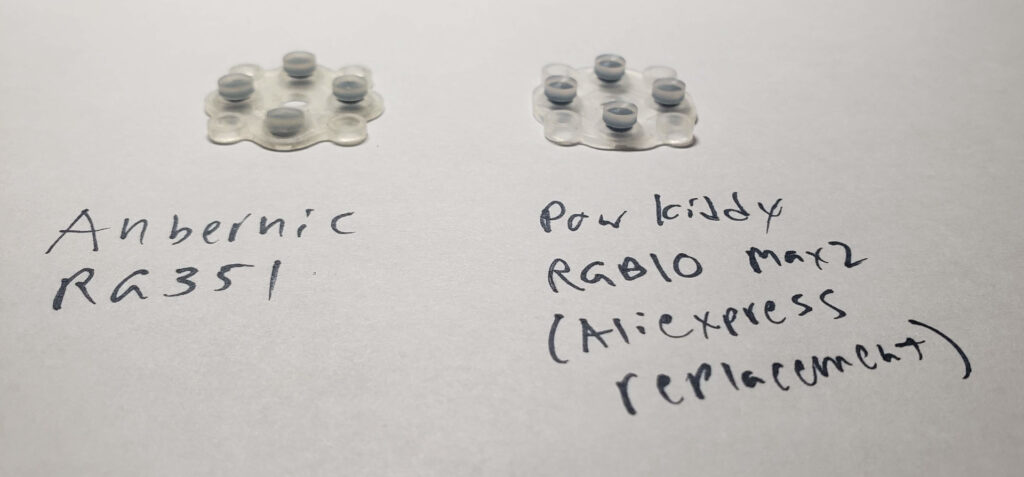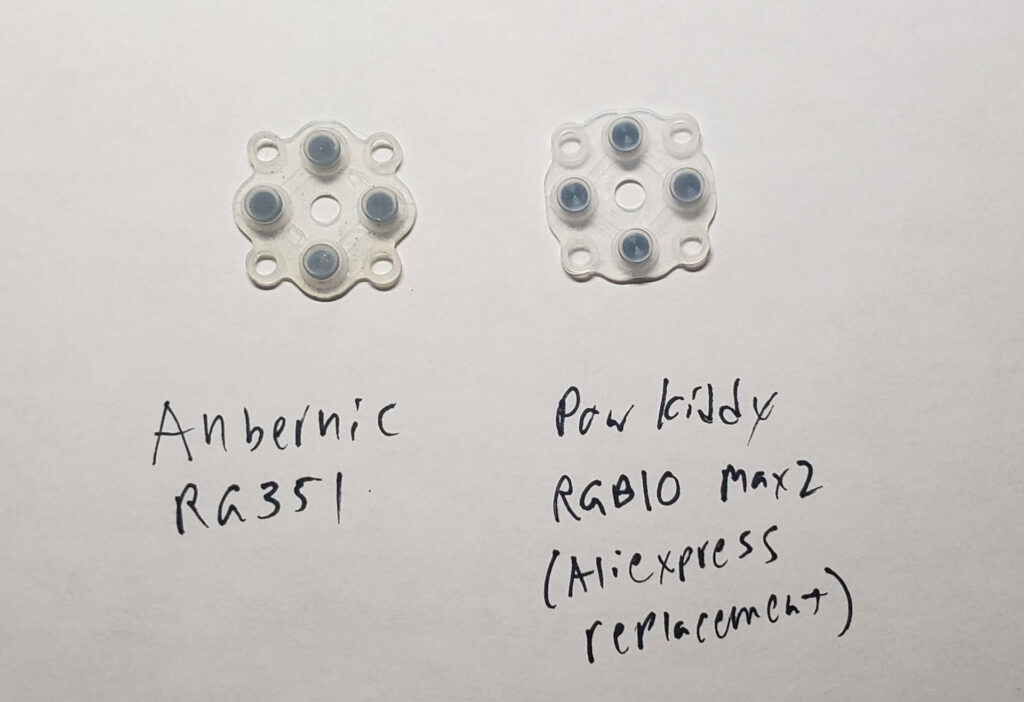Source: Hacker News
Alone in a shack in the Montana wilderness, he fashioned homemade bombs and launched a violent one-man campaign to destroy industrial society.
Source: Hacker News
Alone in a shack in the Montana wilderness, he fashioned homemade bombs and launched a violent one-man campaign to destroy industrial society.
Source: Hacker News
Source: Hacker News
Source: Hacker News
Source: Ars Technica

Enlarge / Visual examples of the kinds of "burned in" sponsorships that Twitch's new guidelines won't allow. (credit: Twitch)
A recent update to Twitch's guidelines restricts many kinds of overlaid ads that streamers themselves can sell and insert on top of their own content. And while Twitch now says it "missed the mark with... policy language" that was "overly broad," many major streamers are still up in arms over a policy they say could severely affect their ability to make money from content on the popular Amazon-owned streaming platform.
In a June 6 update to its Branded Content Policy guidelines (that Twitch says it will start enforcing on July 1), the platform said that so-called "burned in" videos, display banners, or audio ads are not permitted on the platform. These ad formats are popular with many major streamers, who sell a portion of their screen real estate as part of overall branded stream sponsorship deals.
While basic sponsor logos will still be allowed to be shown on these streams, those sponsorships "are limited to 3% of screen size" under the new guidelines. That could be a problem for some disabled streamers because, as blind streamer Steve Saylor pointed out, that size "isn't accessible for low vision users as it is too small for overlays and even smaller on mobile."
Source: Hacker News
Source: Hacker News



I’ve had an Anbernic RG351P for roughly 2 years now, and it’s an absolutely delightful object.
For those unfamiliar: the RG351 is an example of a class of little gaming emulation handhelds that started back in the mid-to-late 2000s with things like the Dingoo A330. They are, essentially, a tiny ARM (+ usually Linux) machine the size and shape of a handheld gaming device, set up with a built-in controller specifically to run games in emulation. The stock firmware on the RG351 is an ancient EmulationStation/RetroArch/Linux stack, but there are better alternatives – IMO, throwing in a decent SD card loaded with AmberElec is the first thing to do when you get one. It will play essentially everything from the dawn of gaming through the PlayStation and some (but not all) of the Nintendo 64 library, and has limited/marginal support for PSP and DS. It is …straightforward but not the sort of thing I’ll link… to obtain the full ROMsets for these platforms, they are frankly not that large. I paid about $90 for mine, I think they’ve gone up a bit, but there are a whole range of similar options at different price points, build qualities, and platform support.
The build quality, however, isn’t perfect. It’s small-brand China-export hardware. You know you have to be a little careful with it just from handling (I keep mine in a fitted case when throwing it in a bag). I’ve been through a screen (I got red lines in my original after about a year), re-gluing the back rubber pads (original glue melted), and now after two years I wore through the membrane behind the “A” button, and that’s actually what this post is about.
I opened it up, found the worn though button, looked around online, couldn’t any in stock, contacted Anbernic through their AliExpress store front (none available), asked the subreddit (no leads), and couldn’t come up with any exact replacement membranes.
HOWEVER on inspection, the membranes from the similar Powkiddy RBG10 appeared extremely similar, and those are readily available (as a $12ish pack of all the membranes and button caps to refit an RGB10, which includes two of the 4x membranes). I ordered this set via Aliexpress, and ~16 days later when it showed up, can confirm the membranes are slightly different, but drop-in compatible.
As you can see from the photos, the Powkiddy membranes have a bit more flat area, and the bottoms of the mounting holes are filled in rather than fully punched through, but the dimensions are exactly right. The height and force of the domes is even almost identical to the originals, and at effectively $6/membrane it’s a very reasonable repair.
Source: Hacker News
Source: Hacker News